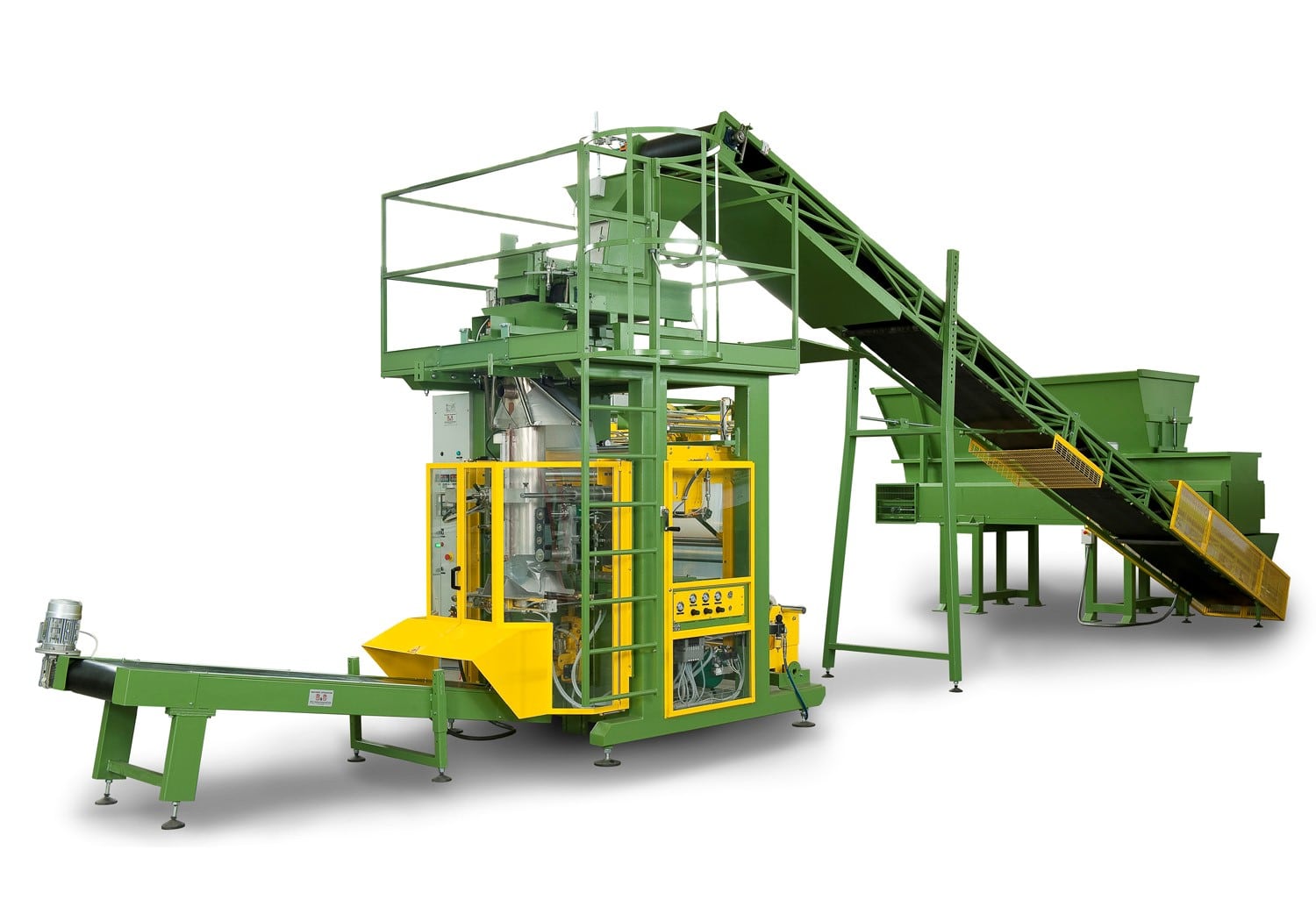Actualizado el Monday, 27 January, 2025
All bulk products must be stored in containers for commercialization. The most common way to store bulk products in small quantities is by using bags or sacks. This is not an easy task, as it requires quick, efficient, and precise product filling, along with perfect sealing. For this reason, performing this task entirely manually is challenging and inefficient. To solve this problem, automatic baggers were developed, taking charge of packaging large quantities of product quickly and accurately into much smaller containers.
If you want to keep learning about automatic bagging machines, read on to discover how these machines can benefit you.
What Is an Automatic Bagging Machine and What Is It For?
Automatic Bagging systems are machines designed to assist humans in the task of bagging or packing products. Depending on the degree of human involvement in the process, they can be classified into automatic bagging machines or semi-automatic bagging machines.
Automatic bagging machines are the ones that operate without human intervention, except for maintenance and replenishment of consumables, handling the process of transferring bulk products in large quantities into smaller sacks or bags (e.g., 15 kg).

Automatic Bagging systems
Types of Automatic Bagging Machines
The types of automatic baggers are mainly determined by the type of bag they produce. The main ones are:
- Open-mouth bag bagging machine
- SOS (Self Opening Sacks) bagging machine
- Valve bag bagging machine
- FFS (Form-Fill-Seal) bagging machine
This variety of baggers allows for handling different types of bags and materials.
How does an Automatic Bagging Machine Work?
As mentioned earlier, an automatic bagger autonomously performs all tasks related to bagging or packaging the product. This process involves several phases:
Dosage
The dosing process involves an electronic device controlling the flow of product into the bagging machine. It stores the exact quantity of the product, weighed, in a pre-dispenser hopper.
Vibration
This optional process uses a hopper vibration system to prevent the product from sticking to the walls. It is especially useful for sticky products, such as damp sand.
Bag Preparation
For each type of bag, a different automatic bagger is used, and thus, a different preparation method applies. In all types of automatic bagging machines, except FFS, no bag preparation is needed because pre-formed bags are introduced into the machine. In FFS baggers, a coil is introduced, which forms the bags using a forming tube.
Dispensing
Once the bag is formed and positioned, the bulk product is dispensed from the hopper.
Closing or Sealing the Container
With the material inside the bag, the final step is to close the container. This process varies depending on the bag or product, determining whether the bag needs to be sewn, heat-sealed, have its valve closed, sealed and cut, etc.
Advantages over Manual and Semi-Automatic Bagging
Automatic bagging systems provide an excellent solution for high or sustained production volumes. This is thanks to the complete automation of the bagging process, which significantly optimizes production.
Automation reduces dependency on human factors, requiring only one operator for consumable replenishment and supervision. Additionally, precise control of the bagging process is achieved, allowing real-time knowledge of the machine’s status, production, and product. Examples of this control include monitoring the product’s moisture, the exact weight of each bag, or the condition of the consumables. All of this occurs in a safe and clean environment.
Thus, automatic bagging machines represent a great option to take the definitive step toward optimizing your plant’s productivity. If you’re looking to implement this type of machinery into your production process, contact us for assistance.
- What is a Sorting System? - 10 de July de 2025
- Cross-Docking Automation: Mastering Zero Inventory - 28 de March de 2025
- Types of Cross-Docking, Examples, and Which One Is Best for You - 14 de March de 2025


